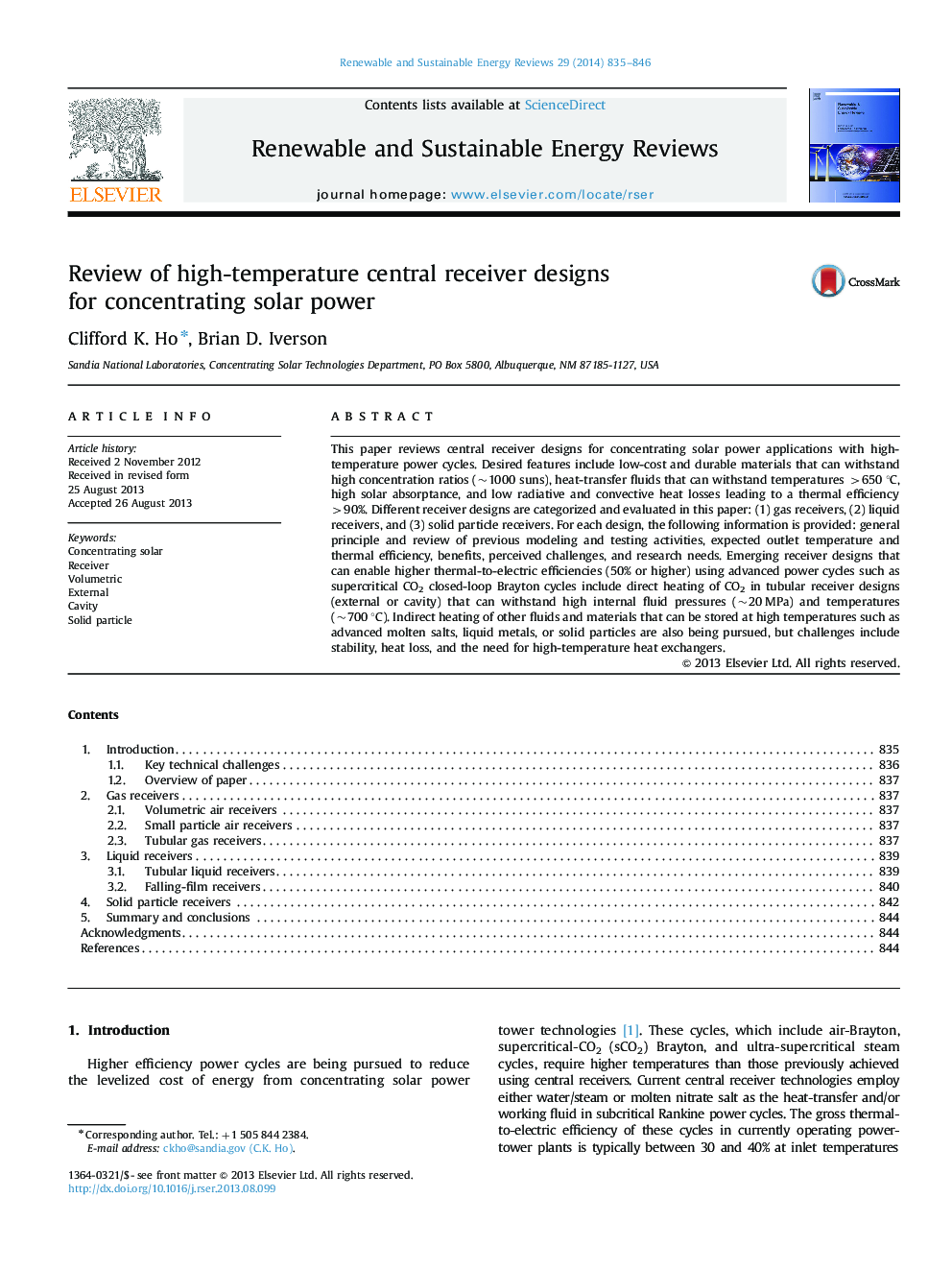| Article ID | Journal | Published Year | Pages | File Type |
|---|---|---|---|---|
| 8121470 | Renewable and Sustainable Energy Reviews | 2014 | 12 Pages |
Abstract
This paper reviews central receiver designs for concentrating solar power applications with high-temperature power cycles. Desired features include low-cost and durable materials that can withstand high concentration ratios (~1000 suns), heat-transfer fluids that can withstand temperatures >650 °C, high solar absorptance, and low radiative and convective heat losses leading to a thermal efficiency >90%. Different receiver designs are categorized and evaluated in this paper: (1) gas receivers, (2) liquid receivers, and (3) solid particle receivers. For each design, the following information is provided: general principle and review of previous modeling and testing activities, expected outlet temperature and thermal efficiency, benefits, perceived challenges, and research needs. Emerging receiver designs that can enable higher thermal-to-electric efficiencies (50% or higher) using advanced power cycles such as supercritical CO2 closed-loop Brayton cycles include direct heating of CO2 in tubular receiver designs (external or cavity) that can withstand high internal fluid pressures (~20 MPa) and temperatures (~700 °C). Indirect heating of other fluids and materials that can be stored at high temperatures such as advanced molten salts, liquid metals, or solid particles are also being pursued, but challenges include stability, heat loss, and the need for high-temperature heat exchangers.
Related Topics
Physical Sciences and Engineering
Energy
Renewable Energy, Sustainability and the Environment
Authors
Clifford K. Ho, Brian D. Iverson,
